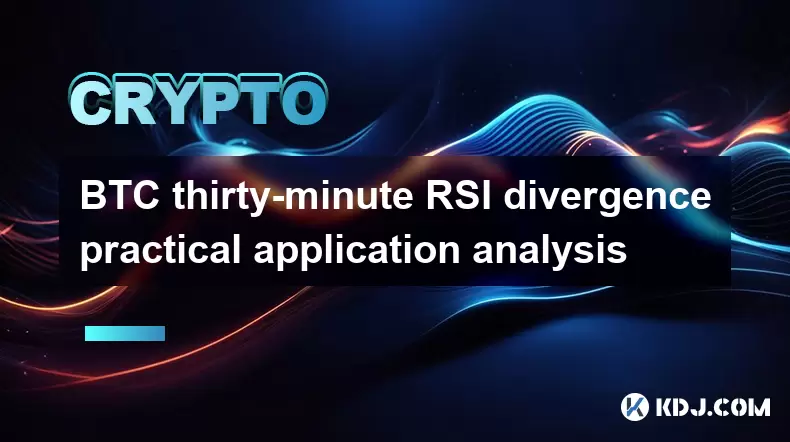-
 Bitcoin
Bitcoin $115100
1.27% -
 Ethereum
Ethereum $3675
2.71% -
 XRP
XRP $2.995
1.45% -
 Tether USDt
Tether USDt $1.000
0.02% -
 BNB
BNB $769.8
2.64% -
 Solana
Solana $168.0
3.25% -
 USDC
USDC $0.9999
-0.01% -
 TRON
TRON $0.3371
1.48% -
 Dogecoin
Dogecoin $0.2051
3.36% -
 Cardano
Cardano $0.7394
2.30% -
 Hyperliquid
Hyperliquid $38.15
0.42% -
 Stellar
Stellar $0.3966
-0.36% -
 Sui
Sui $3.486
2.93% -
 Chainlink
Chainlink $16.72
2.52% -
 Bitcoin Cash
Bitcoin Cash $568.0
4.36% -
 Hedera
Hedera $0.2440
2.59% -
 Ethena USDe
Ethena USDe $1.001
0.04% -
 Avalanche
Avalanche $22.16
2.06% -
 Litecoin
Litecoin $119.1
-0.73% -
 UNUS SED LEO
UNUS SED LEO $8.991
0.04% -
 Toncoin
Toncoin $3.232
-0.39% -
 Shiba Inu
Shiba Inu $0.00001233
2.82% -
 Uniswap
Uniswap $9.717
2.53% -
 Polkadot
Polkadot $3.664
1.85% -
 Dai
Dai $1.000
0.01% -
 Monero
Monero $281.2
-3.89% -
 Bitget Token
Bitget Token $4.350
1.55% -
 Cronos
Cronos $0.1428
5.07% -
 Pepe
Pepe $0.00001050
3.68% -
 Aave
Aave $262.3
3.54%
BTC thirty-minute RSI divergence practical application analysis
BTC thirty-minute RSI divergence signals potential trend reversals when price and RSI move in opposite directions, aiding traders in spotting overbought or oversold conditions.
Jun 05, 2025 at 07:50 pm

Introduction to RSI Divergence
RSI (Relative Strength Index) is a momentum oscillator that measures the speed and change of price movements. It is commonly used to identify overbought or oversold conditions in the market. When it comes to BTC thirty-minute RSI divergence, traders look for discrepancies between the price action and the RSI indicator to predict potential trend reversals. Divergence occurs when the price of Bitcoin moves in one direction while the RSI moves in the opposite direction, signaling a weakening trend and a possible reversal.
Identifying RSI Divergence on a Thirty-Minute Chart
To identify RSI divergence on a thirty-minute chart for Bitcoin, traders need to follow a meticulous process. Here's how to do it:
- Open a thirty-minute chart of Bitcoin on your preferred trading platform.
- Add the RSI indicator to the chart, typically with a standard setting of 14 periods.
- Observe the price movements and compare them with the RSI values. Look for instances where the price makes a higher high or lower low, but the RSI does not follow suit.
- Mark the points where the price and RSI diverge. For example, if the price makes a higher high but the RSI makes a lower high, this is a bearish divergence. Conversely, if the price makes a lower low but the RSI makes a higher low, this is a bullish divergence.
Practical Application of Bullish RSI Divergence
Bullish RSI divergence on a thirty-minute Bitcoin chart can signal that the selling pressure is weakening and a bullish reversal might be imminent. Here's how traders can apply this in practice:
- Identify a bullish divergence by noting where the price makes a lower low, but the RSI makes a higher low.
- Wait for confirmation. Look for a bullish candlestick pattern or a break above a significant resistance level to confirm the divergence.
- Enter a long position once the confirmation is received. Set a stop-loss order below the recent swing low to manage risk.
- Set a take-profit level based on key resistance levels or Fibonacci extension levels.
Practical Application of Bearish RSI Divergence
Bearish RSI divergence on a thirty-minute Bitcoin chart can indicate that the buying pressure is waning and a bearish reversal might be on the horizon. Here's how to apply this in practice:
- Identify a bearish divergence by noting where the price makes a higher high, but the RSI makes a lower high.
- Wait for confirmation. Look for a bearish candlestick pattern or a break below a significant support level to confirm the divergence.
- Enter a short position once the confirmation is received. Set a stop-loss order above the recent swing high to manage risk.
- Set a take-profit level based on key support levels or Fibonacci retracement levels.
Combining RSI Divergence with Other Indicators
While RSI divergence can be a powerful tool, combining it with other technical indicators can enhance its effectiveness. Here are some ways to do this:
- Use moving averages to identify the overall trend. For example, if the price is above a 200-period moving average, a bullish RSI divergence might be more reliable.
- Incorporate volume analysis. If the volume decreases during a bearish divergence, it can reinforce the signal that the trend is weakening.
- Combine with support and resistance levels. Divergence signals are often more potent when they occur near significant support or resistance levels.
Case Study: Applying RSI Divergence in a Real-World Scenario
Let's examine a hypothetical case study to see how RSI divergence on a thirty-minute Bitcoin chart could be applied in practice.
- Scenario: Bitcoin is in an uptrend, but the RSI starts to show lower highs while the price continues to make higher highs.
- Analysis: This is a potential bearish divergence. The trader marks the divergence points and waits for confirmation.
- Confirmation: A bearish engulfing candlestick pattern forms, and the price breaks below a key support level.
- Action: The trader enters a short position with a stop-loss set above the recent swing high. They set a take-profit level at a nearby support level.
- Outcome: The price continues to decline, hitting the take-profit level, resulting in a profitable trade.
Frequently Asked Questions
Q1: Can RSI divergence be used on other timeframes besides thirty minutes?
Yes, RSI divergence can be used on various timeframes, including one-minute, five-minute, hourly, and daily charts. However, the effectiveness of the divergence might vary depending on the timeframe and the trader's strategy.
Q2: Is RSI divergence a standalone strategy, or should it be used with other tools?
RSI divergence is most effective when used in conjunction with other technical analysis tools. Combining it with indicators like moving averages, volume analysis, and support/resistance levels can provide a more comprehensive trading strategy.
Q3: How reliable is RSI divergence as a trading signal?
The reliability of RSI divergence can vary. While it is a powerful tool, it is not infallible. Traders should always use additional confirmation signals and manage their risk appropriately to increase the likelihood of successful trades.
Q4: Can RSI divergence be applied to other cryptocurrencies besides Bitcoin?
Yes, RSI divergence can be applied to other cryptocurrencies. The principles remain the same, but traders should be aware that different cryptocurrencies may have varying levels of volatility and liquidity, which can affect the effectiveness of the divergence signals.
Disclaimer:info@kdj.com
The information provided is not trading advice. kdj.com does not assume any responsibility for any investments made based on the information provided in this article. Cryptocurrencies are highly volatile and it is highly recommended that you invest with caution after thorough research!
If you believe that the content used on this website infringes your copyright, please contact us immediately (info@kdj.com) and we will delete it promptly.
- BlockDAG, Litecoin, and Cardano: Charting the Course in Crypto's Dynamic Waters
- 2025-08-07 09:09:06
- Fireverse Token: Igniting a Musical Revolution in Web3
- 2025-08-07 08:27:45
- Ethereum, L2 Withdrawals, and Decentralization: A New Yorker's Take
- 2025-08-07 08:32:33
- Avalanche vs. Ruvi AI: Daily Sales Tell a Story of Crypto Disruption
- 2025-08-07 06:29:35
- DeSoc: The Crypto to Buy Now for a Decentralized Future (and Maybe 43x Gains!)
- 2025-08-07 06:50:16
- Arctic Pablo Coin: Riding the Meme Coin Wave with a Deflationary Twist
- 2025-08-07 07:18:13
Related knowledge

Can the Bitcoin protocol be changed?
Aug 07,2025 at 01:16pm
Understanding the Bitcoin ProtocolThe Bitcoin protocol is the foundational set of rules that govern how the Bitcoin network operates. It defines every...

How does Bitcoin handle scalability issues?
Aug 07,2025 at 10:54am
Understanding Bitcoin’s Scalability ChallengeBitcoin’s design prioritizes decentralization, security, and immutability, but these principles come with...

Do you need to understand technology to use Bitcoin?
Aug 07,2025 at 06:17am
Understanding the Basics of BitcoinTo engage with Bitcoin, one does not need a deep understanding of the underlying technology, much like how individu...

Can your Bitcoins be stolen?
Aug 07,2025 at 03:28am
Understanding the Security of Bitcoin OwnershipThe decentralized nature of Bitcoin means that no central authority controls the network, placing the r...

How does Bitcoin compare to gold?
Aug 07,2025 at 03:18am
Historical Context and Origins of Bitcoin and GoldUnderstanding the comparison between Bitcoin and gold begins with their origins and historical roles...

Can you lose money with Bitcoin?
Aug 07,2025 at 07:49am
Understanding the Volatility of BitcoinBitcoin is known for its extreme price volatility, which is one of the primary reasons investors can lose money...

Can the Bitcoin protocol be changed?
Aug 07,2025 at 01:16pm
Understanding the Bitcoin ProtocolThe Bitcoin protocol is the foundational set of rules that govern how the Bitcoin network operates. It defines every...

How does Bitcoin handle scalability issues?
Aug 07,2025 at 10:54am
Understanding Bitcoin’s Scalability ChallengeBitcoin’s design prioritizes decentralization, security, and immutability, but these principles come with...

Do you need to understand technology to use Bitcoin?
Aug 07,2025 at 06:17am
Understanding the Basics of BitcoinTo engage with Bitcoin, one does not need a deep understanding of the underlying technology, much like how individu...

Can your Bitcoins be stolen?
Aug 07,2025 at 03:28am
Understanding the Security of Bitcoin OwnershipThe decentralized nature of Bitcoin means that no central authority controls the network, placing the r...

How does Bitcoin compare to gold?
Aug 07,2025 at 03:18am
Historical Context and Origins of Bitcoin and GoldUnderstanding the comparison between Bitcoin and gold begins with their origins and historical roles...

Can you lose money with Bitcoin?
Aug 07,2025 at 07:49am
Understanding the Volatility of BitcoinBitcoin is known for its extreme price volatility, which is one of the primary reasons investors can lose money...
See all articles

























































































